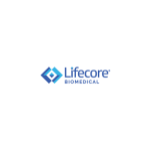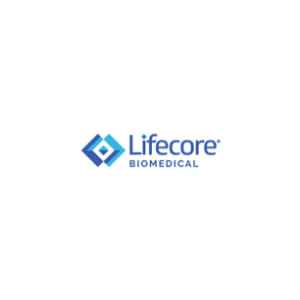Welcome to our dedicated page for Lifecore Biomedical SEC filings (Ticker: LFCR), a comprehensive resource for investors and traders seeking official regulatory documents including 10-K annual reports, 10-Q quarterly earnings, 8-K material events, and insider trading forms.
SEC filings for a sterile injectable CDMO like Lifecore Biomedical (LFCR) can feel like navigating a lab notebook—dense with GMP jargon, hyaluronic acid production stats and quality-system validations. If you've ever searched for “Lifecore Biomedical SEC filings explained simply,” you know the challenge of extracting CDMO revenue trends or spotting fermentation capacity disclosures buried deep in a 300-page report.
Stock Titan solves that problem. Our AI identifies what matters in every document, from the Lifecore Biomedical annual report 10-K simplified to each Lifecore Biomedical quarterly earnings report 10-Q filing. Instantly surface segment margins, backlog changes and risk-factor shifts. Need real-time alerts? We stream Lifecore Biomedical Form 4 insider transactions real-time, flagging executive stock sales the moment they hit EDGAR. For sudden contract wins or FDA updates, the platform breaks down Lifecore Biomedical 8-K material events explained so you grasp the impact without parsing legalese.
- Track Lifecore Biomedical insider trading Form 4 transactions alongside price charts.
- Compare fermentation vs. fill-finish performance with our Lifecore Biomedical earnings report filing analysis.
- Review board pay in the latest Lifecore Biomedical proxy statement executive compensation.
- Save hours by understanding Lifecore Biomedical SEC documents with AI summaries.
- Monitor Lifecore Biomedical executive stock transactions Form 4 before key announcements.
Every filing type—10-K, 10-Q, 8-K, Form 4—lands here seconds after EDGAR posts, complete with plain-English context and expert commentary. Whether you’re modeling capacity expansion or checking compliance milestones, our AI-powered analysis turns Lifecore’s complex disclosures into actionable insight.
Lifecore Biomedical, Inc. reported that, beginning on November 18, 2025, it intends to use an updated investor presentation in discussions with certain investors, analysts and other parties. The presentation, dated November 17, 2025, is provided as an exhibit and will also be available on the company’s investor relations website under events and presentations. The disclosure is made under Regulation FD to make the same information available to the broader market.
Lifecore Biomedical (LFCR) reported Q3 results for the calendar quarter ended September 30, 2025. Total revenues were $31,109 thousand, up from $24,705 thousand, driven by HA manufacturing $9,360 thousand and CDMO $21,749 thousand. Gross profit rose to $7,791 thousand from $5,387 thousand, and the operating loss improved to $3,067 thousand from $11,584 thousand.
Net loss was $9,991 thousand versus $16,230 thousand, with loss per share of $0.29. Cash and cash equivalents were $18,856 thousand. The company completed a capacity expansion expected to more than double aseptic capacity; depreciation is expected to increase by approximately $1,600 per year.
Alcon accounted for 38% of revenue and is also the term-loan lender. Related party term-loan principal was $179,562 thousand with an effective annual interest rate of 20.9%, and the company remained in compliance with covenants. Contract liabilities, current, were $7,214 thousand. Shares outstanding were 37,466,352 as of October 30, 2025. The company paid-in-kind preferred dividends of $874 thousand and recorded a stockholders’ equity deficit of $10,537 thousand.
Lifecore Biomedical (LFCR)Exhibit 99.1. It also made an investor presentation available on its website, furnished as Exhibit 99.2. The materials were provided on November 6, 2025 and are furnished, not filed, under the Exchange Act. Lifecore’s common stock trades on the NASDAQ Global Select Market under the symbol LFCR.
Lifecore Biomedical (LFCR) reported the results of its 2025 annual meeting. Stockholders elected nine directors: seven were elected by all stockholders voting together, and two were elected solely by holders of the Series A Convertible Preferred Stock. The director slate received strong support across nominees.
Stockholders also ratified KPMG LLP as independent auditor for the fiscal year ending December 31, 2025, with 35,663,643 votes for, 15,326 against, and 68,718 abstentions. In a non-binding advisory vote, executive compensation was approved with 24,642,130 votes for, 238,354 against, 80,394 abstentions, and 10,786,809 broker non-votes.
As of the September 2, 2025 record date, there were 37,436,784 shares of common stock outstanding and entitled to vote. Series A Preferred totaled 46,593 shares, which were entitled to elect two preferred directors and to vote on an as-converted basis representing the equivalent of 7,131,735 common shares on other items, subject to applicable limits.
Lifecore Biomedical, Inc. filed a Form S-3 shelf registration to register up to 20,456,637 shares of common stock for resale by certain selling stockholders, including 6,556,521 issued shares and 13,900,116 shares issuable upon conversion of Series A Convertible Preferred Stock. The company notes its common stock trades on the Nasdaq Global Select Market under the symbol LFCR, with a reported price of $7.87 on September 19, 2025. The Series A Convertible Preferred Stock carries a 7.5% per annum PIK dividend, an initial conversion price of $7.00 per share (adjusted to approximately $6.53 after a prior private placement) and a liquidation preference equal to the greater of the purchase price plus accrued dividends or the as-converted value. The prospectus incorporates prior SEC filings by reference. The independent auditor, BDO USA, P.C., issued an adverse opinion on the effectiveness of the company’s internal control over financial reporting as of May 25, 2025.
Lifecore Biomedical presents its definitive proxy with board nominations, governance policies, executive pay detail, legal proceedings, and auditor changes. The filing discloses nine director nominees including two Series A Preferred nominees and emphasizes a non-executive Chairperson presiding over independent director executive sessions. It describes a Code of Business Conduct, an ethics hotline, and committee independence. The company is defending a December 23, 2024 complaint by 22NW Fund alleging misrepresentations and breaches; the company moved to dismiss most claims but accrued registration delay fees. Auditor BDO reported material weaknesses in internal control for fiscal years ended May 26, 2024 and May 25, 2025; Audit Committee approved transition to KPMG for the remainder of 2025. Executive compensation changes, PSU and RSU awards, severance terms, and a strong 99.1% say-on-pay vote are disclosed.
Ryan Lake, Chief Financial Officer of Lifecore Biomedical, Inc. (LFCR), reported a transaction dated 09/03/2025 in which 22,932 shares of common stock were disposed of at $7.71 per share. The filing states these shares were withheld by the issuer to satisfy tax withholding obligations related to the vesting and settlement of restricted stock units (RSUs). After the withholding, Mr. Lake beneficially owns 336,691 shares directly. The Form 4 was signed by an attorney-in-fact on 09/04/2025.
Lifecore Biomedical reported material weaknesses in its internal control over financial reporting, identifying deficiencies in Information and Communication, Control Activities and Monitoring. The company said the weaknesses relate to accounting and classification of non-standard transactions, inventory valuation, capitalization of interest on assets under construction, recognition of development revenue and related cost of sales, presentation of operating costs for continuing and discontinued operations, and write-offs of receivables from its former Curation Foods businesses. Management concluded that, as of May 25, 2025, these deficiencies remained aggregated as material weaknesses. The Audit Committee discussed the issues with BDO, authorized BDO to respond to KPMG inquiries, and filed BDO's letter as Exhibit 16 to the Form 8-K.
Lifecore Biomedical intends to use a presentation in discussions with investors, analysts and others and has furnished that presentation as Exhibit 99.1 to this Current Report. The company says the Presentation will be posted on its investor relations website and that the material furnished in this Item (including Exhibit 99.1) shall not be deemed "filed" for purposes of Section 18 of the Exchange Act nor incorporated by reference into future Securities Act filings unless expressly stated.
This disclosure is a Regulation FD furnishing of investor materials and confirms where the Presentation will be available; the report is signed by the company's Chief Financial Officer.


